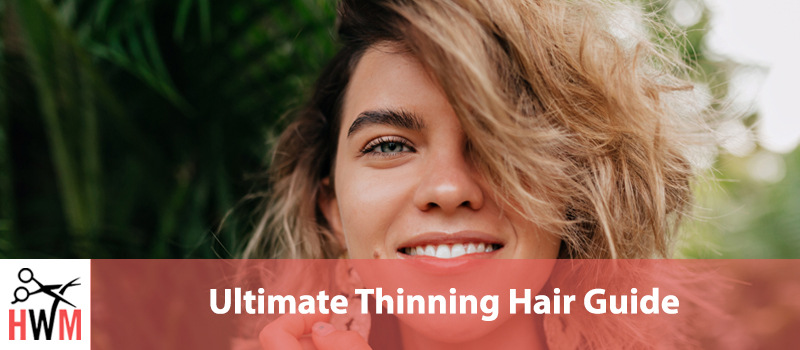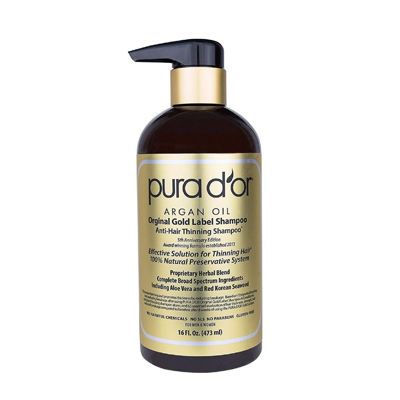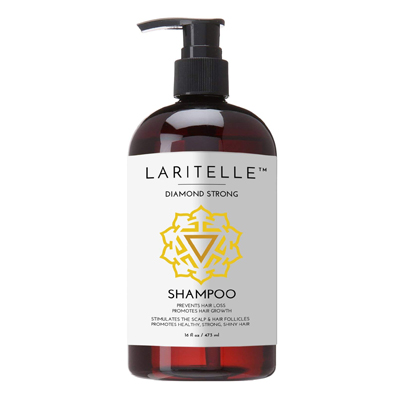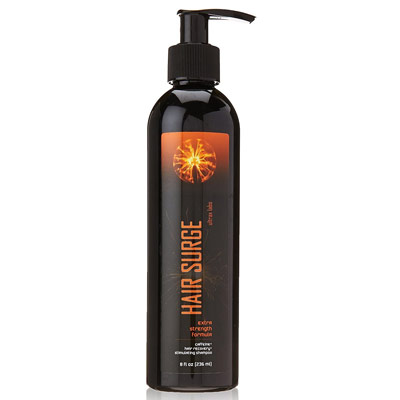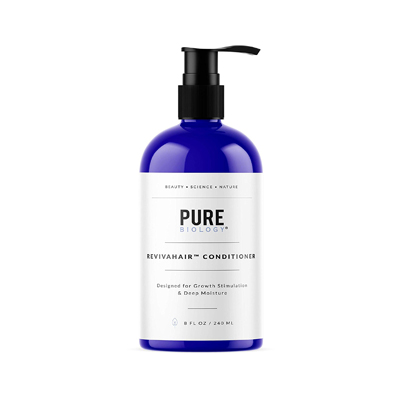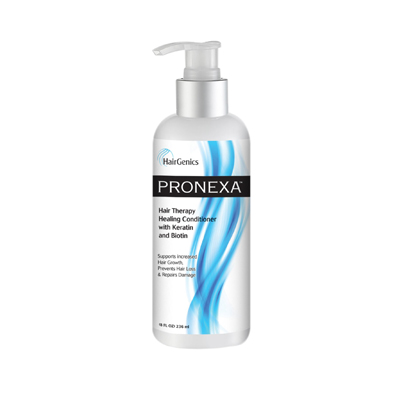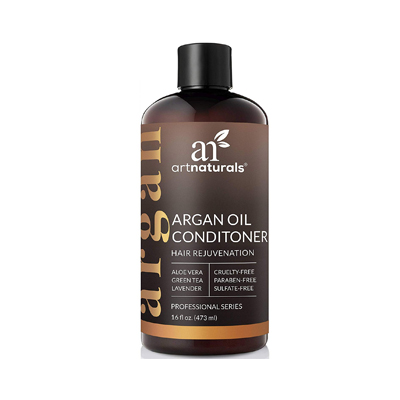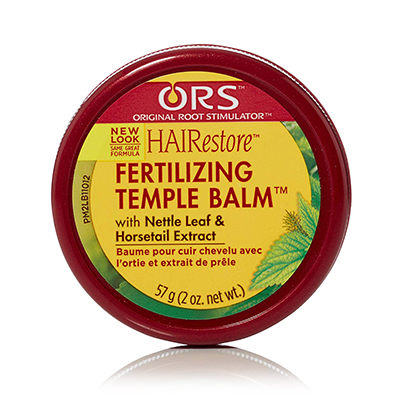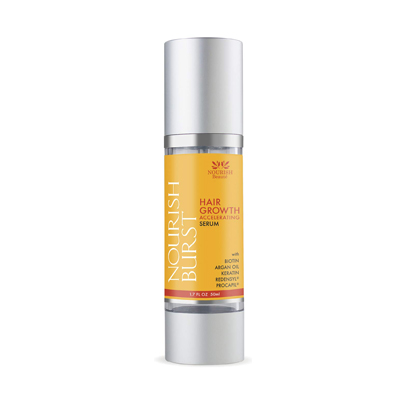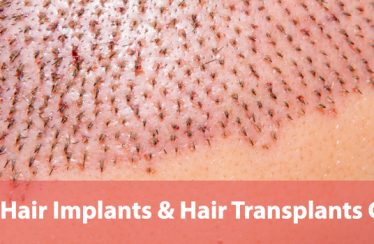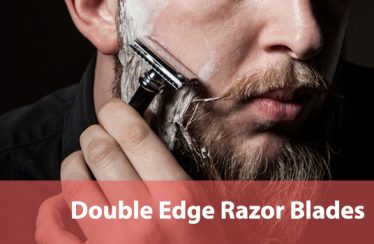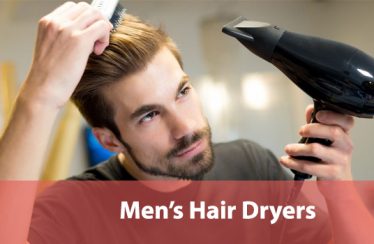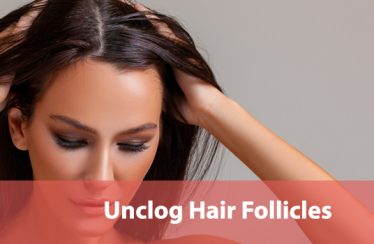There’s a huge difference between thinning and fine hair. However, if you mistake one for the other, you’re not alone. Most people can’t differentiate between the two. It is very difficult to tell thinning hair from fine hair because they’re outwardly very similar.
They not only look similar but will also feel the same if you run your fingers through your hair. If you look deeper, though, you’ll find them to be significantly different.
As a result, the way you take care of thinning hair is also drastically different from how you manage fine hair. If you have thinning hair and have made the mistake of taking advice from fine-haired people or fine hair guides, then you’ve already realized this. Therefore, let’s be clear about one thing.
This is a Thinning Hair Guide and not a fine hair guide. In fact, it is the ultimate thinning hair guide. Once you go through it, you’ll never need another again.
We will cover everything you’ll ever need to know about thinning hair in this guide, starting from the technicalities pertaining to thinning hair, moving through the various techniques of managing it, and ending with various things you can try to beat the problem.
Here is a clickable, contents panel that will not only show you everything we will be covering on this page but also make it easier for you to navigate through the guide.
- Do You Have Thinning Hair or Fine Hair?
- Why Do You Have Thinning Hair?
- What Does It Mean to Have Thinning Hair?
- Fight Thinning Hair Naturally
- Counter Thinning Hair with Artificial Treatments
Do You Have Thinning Hair or Fine Hair?
Before you dive into this thinning hair guide, we want you to understand how thinning hair is different from fine hair.
The reason why it is so difficult to distinguish between thinning hair and fine hair is that they give rise to the same problem, i.e. lack of sufficient volume. Both thinning and fine hair suffer from insufficient volume, but they arrive at the problem differently.
People who have fine hair have thin hair strands, while people with thinning hair have fewer hair strands. Therefore, fine hair has to do with the thickness of every hair strand, while thinning hair has to do with the number of hair strands on the head.
It’s a fundamental difference that can only be spotted with a very specific technique – the strand test. While you cannot count the number of hairs on your head, you can get an idea of the thickness of your hairs. This is the basic principle of the strand test.
To do this test, you need to roll a hair strand between your thumb and forefinger. If you have fine hair, you won’t feel much of the hair between your fingers. However, if you have thick or coarse hair, the hair strand will stand out between your fingers.
This will show you that you don’t have fine hair, but how do you know if you have thinning hair? So long as you don’t have fine hair, thinning hair will always be accompanied by symptoms like the scalp being visible in between hairs or a receding hairline. This brings us to the causes of thinning hair.
Why Do You Have Thinning Hair?
Multiple reasons are behind hair thinning. Even so, those reasons can be split into two categories – reactive thinning hair and progressive thinning hair. As the terms suggest, reactive thinning is temporary and occurs due to a sudden and temporary external influence, while progressive thinning starts slow and is hereditary in nature.
The causes of both these types of thinning are different. Reactive thinning is usually caused by temporary problems such as excess stress, dietary deficiencies, medical or hormonal conditions in the body, and side-effects from particular substances.
These events cause hormonal changes in the body and the scalp, which forces hair follicles to move into their transition phase abruptly and prematurely. This results in the hair falling off. In case you’re wondering, the hair growth cycle consists of three phases – growth (anagen), transition (catagen), and rest (telogen).
Many of these causes may even apply to progressive thinning, but the primary driver behind this type of thinning is genes. Therefore, the main cause of progressive thinning is pattern baldness. In pattern baldness, whether male or female, hair follicles in the scalp become more sensitive to dihydrotestosterone (DHT).
DHT is a male hormone derived from another male hormone called testosterone. DHT is produced when there is excess testosterone in the body. When DHT bonds with hair follicles, it inhibits their natural growth and ability to grow hair. Gradually, the affected hair follicles shrink and lose their ability to grow hair entirely. This process is called hair follicle miniaturization.
What Does It Mean to Have Thinning Hair?
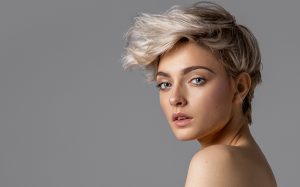
In a nutshell, it means that you’re well on your way to losing all your hair. However, there are various ways you can come to that grand finale. The characteristics of thinning hair will vary based on what is causing it as well as your gender.
Reactive thinning, for example, is seen more commonly in women while progressive thinning is more common in men. Further, reactive thinning is not localized and is typically diffused all over the head. It is even possible that you’ll lose hair in clumps, but the hair loss will never follow a specific pattern.
Progressive hair thinning, on the other hand, follows a distinct pattern. However, the patterns differ between men and women. In men, the hair follicles above the temple, the frontal hairline, and the crown start dying off first.
The result of this is that the hair above the temples starts falling off, followed by the frontal hairline. Simultaneously, the hair at the crown of the head will start thinning out as well.
As the stages of male pattern baldness progress, we see balding above the temples, turning into a distinct M-shape covering the entire frontal hairline, and ending with balding everywhere on the head except for the back and the sides. The stages of male pattern baldness have been delineated on the Norwood Scale.
In women, pattern baldness begins with thinning at the central parting. It gradually spreads and may merge with the frontal hairline as well. The most advanced stage of female pattern baldness is typified by a bald crown and balding frontal hairline. The sides and the back of the head retain their hair. The stages of women pattern baldness can be found in the Ludwig or the Savin Scale.
Reactive thinning is almost always reversible, but there’s less certainty with progressive thinning since it is genetic in nature. Therefore, you can turn back reactive thinning completely with the right steps.
You can even counter progressive thinning if you catch the problem early enough. However, reversing progressive thinning is much more difficult than reacting thinning.
For instance, most cases of reactive thinning can be dealt with a few natural changes in the lifestyle and dietary habit. In contrast, to reverse progressive thinning, you’ll need specialized treatments combined with significant changes in lifestyle and dietary habits.
We’ll start with natural thinning hair solutions and move on to product-based or specialized solutions.
Fight Thinning Hair Naturally
While the causes may differ between reactive and progressive hair thinning, they both result in hormonal and enzymatic changes in the body. The reason for this is that these causes create an imbalance in the way our body functions through various mechanisms.
However, there are ways that you can return the body to that all vital equilibrium. Some of these ways involve eliminating the temporary causes, while others involve countering hormonal and enzymatic imbalances caused by genetic predispositions. The best part is that all of these ways are completely natural.
Deal with Any Medical Conditions or Side-Effects
If a medical condition or some kind of side-effect is causing your hair to start thinning, then all you need to do is remove that temporary cause from the picture.
For instance, chronic allergies are known to facilitate hair loss. Allergies lead to inflammations, which in turn hinder the normal functioning of the hair follicles. Even if the allergic reaction is not severe and only chronic, it can still stunt the growth of the hair follicle.
While it may be difficult to identify allergens in the case of chronic allergies, it isn’t entirely impossible. You just need to experiment a little with your foods and daily habits. Consulting a specialist will also help.
Pregnancy is another great example. Because the body’s resources are diverted towards developing the baby, hair follicles can often become neglected. This can result in hair loss and temporary thinning. This is why pregnant and nursing women are almost always prescribed supplements.
On the more severe side, chemotherapy can also be seen as an example. The strength of medicines used in chemotherapy is such that hair follicles sustain severe damage. However, when chemotherapy is discontinued, hair often returns to normal.
Whether the cause of your thinning hair is a medical condition or side effect of some substance, discussing the scenario with a doctor will help you pinpoint and negate it.
Quit Smoking and Reduce Drinking
Smoking and excessive alcohol consumption are also common causes of thinning hair.
Smoking, especially, is a proven cause of hair loss. There’s plenty of scientific proof that smoking doesn’t only affect the hormonal balance and circulatory infrastructure in the scalp, but also drastically changes the DNA profile of the individual.
Excess alcohol consumption promotes the thinning of hair in more than a single way. Firstly, nutrient absorption slows down with excess alcohol in the system because the body starts prioritizing its breakdown over all other tasks.
Second, it leads to sleep deprivation which increases stress. Stress has been connected to hair loss in a clinical trial conducted in 2017. Third, it causes fluctuations in blood sugar levels, which lead directly to insulin resistance, inflammation, and hair loss.
Finally, it dehydrates the body. This can cause the hair follicles and shafts to dry up as well. Dry hair shafts are far more susceptible to breakage than healthy hair shafts.
Drink More Water

Dehydration, in fact, is a major cause for thinning hair. This is understandable too, because water is at the center of every process in our body. Sixty percent of our body, after all, is made up of water.
Most of the elasticity and flexibility in our body is a result of water. In fact, water even supports our cellular structure in various ways. It performs the same function for our hair. Without sufficient water in the body, hair becomes excessively dehydrated, dry, and brittle.
Therefore, if you don’t have enough water, your hair will break and fall off in large numbers. Doctors recommend having half a gallon of water every day. This amounts to eight glasses with a capacity to hold eight ounces of water. This is how the 8 x 8 rule was formed.
While increasing the amount of water you drink will help, topically moisturizing your hair with water will also be useful.
Take Better Care of Your Hair
Believe it or not, our problem of thinning hair is often of our own making. This is especially true in men, but also pertinent in the case of women.
Men generally don’t bother taking care of their hair beyond shampooing and brushing it into place. Sometimes, they’ll oil or gel their hair, but that’s about it.
Even though women take care of their hair in terms of oiling, conditioning, and maintaining it, they also damage their hair more through various styling decisions. They use hot tools regularly, they color their hair, and some even put it through multiple chemical treatments of various types.
There are multiple ways through which we damage our own hair. If our hair is already susceptible to damage or if we make too many mistakes, we can cause our hair to thin too. This is why one of the ways we can counter thinning hair is by taking better care of our hair. Here are some tips.
Wash Your Hair Less
Every time you wash your hair, you put undue stress on it. The shampoo, the water, and even the handling of the hair affect the structural integrity of every hair shaft. The good news is that you don’t have to wash your hair as often as you probably do right now.
Ideally, you should reduce the number of times you wash your hair in a week to two. This would not only reduce potential damage to your hair but also save you tons of time.
You can start by reducing the number of washes gradually. Begin by skipping a day, move on to skipping two days, and then just wash your hair twice a week. To compensate for this change, you’ll have to change your hair products too, but we’ll get to those later in this guide.
Dry Your Hair Properly
What makes washing even worse is that you have to dry your hair afterward, and the drying process puts further mechanical stress on the hair. Everything from rubbing with a towel to using a hairdryer is damaging to the hair.
For example, most of us tend to use cotton towels without realizing that cotton tangles and pulls hair out. Similarly, most men and women use hairbrushes on their hair because they don’t realize how much mechanical stress this puts on their hair. Fixing all of these little mistakes we make while drying our hair can prevent them from breaking.
Using a microfiber towel in place of cotton towels can prevent hair strands from being caught and pulled. Similarly, softly dabbing and squeezing hair instead of rubbing it can minimize breakage. Even using wide-toothed combs instead of dense brushes can prevent hair breakage.
We can even try to dry our hair in the open air or under the sun to avoid any mechanical or temperature-based damage.
Avoid Hot Tools
Heat damage is a very serious issue. It will not only cause hair thinning but will increase the rate of hair loss by weakening every hair strand. The most common source of heat damage is hot tools such as hairdryers, curling irons, and flat irons, although prolonged exposure to sunlight isn’t uncommon either.
The best way to prevent hair thinning and protect weakened hair is to avoid this heat exposure. This means not spending a lot of time in the sun without proper headgear and ceasing the use of hot tools. You can use non-heat replacements of curling irons and flat irons to style your hair.
However, the most difficult will be to stop using hairdryers, especially if you have a hectic schedule on most days. After all, letting your hair air dry or even using sunlight to do it is incredibly time consuming. Fortunately, technological advancements have resulted in hairdryers that rely on high-speed airflow to dry hair instead of high temperatures.
We’re, of course, talking of the Dyson Supersonic Hair Dryer. It is a very useful device that will not only keep your thinning hair from getting damaged by heat but will also end up saving you a lot of time.
Don’t Color Your Hair
Coloring your hair can be as harmful to your thinning hair as exposure to heat. Moreover, coloring your hair too much can also cause your hair to thin out. Hair coloring is done through dyes and dyes are artificial chemicals that coat the hair strand.
This dye-based coating will not only seal the hair off from critical nutrients, but the chemicals will also weaken the internal structure of the hair in different ways. This is also true for chemical treatment of various types.
The only two ways of avoiding this kind of damage are to avoid these kinds of treatments or find natural alternatives. For instance, there are many natural ways of coloring hair.
Naturally-occurring substances you can color your hair with include chamomile, sage, coffee, lemon juice, henna, beet juice, and carrot juice.
Ditch Bad Food Habits
The rigors of modern lifestyles have resulted in processed food becoming a more feasible option for most people over home cooked food. Unfortunately, processed foods tend to promote hair thinning. They contain ingredients that either initiate new harmful processes in the body or block off positive processes that were supposed to occur.
While processed foods contain various artificial chemicals and compounds such as preservatives, it is added sugar that is at the root of most modern diseases and problems. Added sugar in these foods puts immense pressure on the body’s glucose management system, especially since it causes massive fluctuations in blood sugar levels.
The result is insulin resistance. Insulin resistance gives rise to more inflammation in the body, and inflammation is known to make hair follicles more sensitive to DHT amongst other things. The correlation between hair loss and insulin resistance is nothing new. It has been proven multiple times in multiple ways.
This is why ditching processed food items with added sugars can be a sure-shot way of slowing down hair thinning and improving your overall health.
Like processed foods with added sugars, greasy foods also encourage inflammation in the body. As a result, they can also cause hair thinning. Moreover, excess consumption of greasy foods often results in excess oil deposits in the scalp. This blocks hair follicles off from producing hair, resulting in hair thinning. This is why you should try to avoid greasy foods too.
Know Your Nutrition
Avoiding harmful foods will help you greatly as you try to counter thinning hair. It will take away the variables that are causing thinning hair. However, what can you do to speed up your body’s recovery from the already existing damage?
You give it the raw materials it needs to do this, i.e. the right nutrients. The simplest way to do this is only to have natural foods and healthy ingredients. A more refined and advanced way is to manage your nutrition consciously.
To do this, you’ll have to learn about the nutrients you need most to help against thinning hair as well as foods that contain them. If you have this knowledge, you can incorporate those food items in your daily meals. Here are a few nutrients and their corresponding food items you should be focusing on.
Proteins
What are proteins? Proteins are long chains of amino acids. The type of amino acids and the way they’re linked together define the final nature of the protein in question. This makes amino acids the smallest building blocks of proteins.
Your hair is largely made up of a specific type of protein, namely keratin. If you have sufficient amino acids in your body, your hair follicles will find it easier to produce keratin and your hair will be stronger.
The best way to get these amino acids is to start incorporating protein-rich foods into your daily diet. A protein-rich diet will also help you lose weight, make your skin healthier, and counter many chronic illnesses.
The best source of proteins is animal proteins such as chicken, red meats, eggs, and even fish. However, if you’re a vegan, you can get your amino acids from foods like leafy vegetables, yogurt, legumes, and peanuts.
A bonus of having animal proteins is that they tend to be rich in multiple other nutrients that help towards hair health.
Omega Fatty Acids
Omega fatty acids are essential fatty acids that the body needs but cannot produce internally. This is particularly true of omega-3 fatty acids which are known for countering inflammation in the body. Since inflammation causes hair loss, omega-3 fatty acids can help slow down and turn around hair thinning.
In fact, every particular component in the entire family of omega fatty acids has important roles to play in the body. In terms of hair growth, studies have proven their effectiveness. One study proved significant hair growth in women receiving a supplement comprising omega fatty acids and some antioxidants.
Another randomized trial focused on fish oil showed a considerable reduction in hair loss and increase in hair growth. Fish oil, incidentally, is one of the richest substances in nature when it comes to omega fatty acids of various types.
Therefore, if you increase your intake of omega fatty acids, whether naturally or through supplements, you can give a huge boost to your efforts against thinning hair. If you wish to avoid supplements, you can incorporate foods like fish, other types of seafood, flaxseed, chia seeds, walnuts, and soybeans into your regular diet.
Minerals
Minerals are micronutrients because they aren’t required in larger quantities. However, this doesn’t mean that they’re not important.
They not only contribute to various cellular processes as well as hormonal interactions in the body but are crucial to hair health too. Therefore, if you’re looking to prevent hair thinning or even slow its progress, you need to ensure that your diet contains the following minerals.
- Iron: Iron is a core component of red blood cells. Iron deficiency causes anemia and hinders blood circulation in the body. Since circulation is important for the distribution of oxygen and other nutrients in the body, iron deficiency results in undernourished hair follicles. This facilitates hair follicle miniaturization and causes hair thinning. Animal proteins are a good source of iron, but other foods like dark chocolate, tofu, legumes, leafy vegetables, and whole grains also contain it in decent quantities.
- Zinc: Most cases of hair thinning can be attributed to pattern baldness, which means the influence of DHT. Zinc is a direct counter to DHT, as it prevents it from bonding with hair follicles. As a result, zinc actively prevents hair follicle miniaturization and hair thinning. The best source of zinc is again animal proteins. However, vegans can find it in nuts, various types of seafood, legumes, and meats.
- Magnesium: This is another micronutrient that is vital to multiple cellular functions. In fact, magnesium is an irreplaceable cog in more than 700 different cellular processes. While each of these processes will affect hair health indirectly, two do so directly. The first is protein synthesis and the other is calcium management. Without magnesium, you’ll be unable to make sufficient keratin for your hair, and your hair follicles will become clogged due to calcium deposits in the scalp. Magnesium can be found in dark chocolate, nuts, seeds, beans, and leafy vegetables. You’ll also need to avoid greasy foods since excess fats in the body can prevent magnesium absorption.
Vitamins
The hair care industry is well aware of the importance of vitamins in hair health. This is why most hair products, these days, tend to contain one or more types of vitamins.
While topical agents containing vitamins will be helpful for your hair, their benefits will be incomparable to vitamins consumed through food items regularly. This is especially true if you wish to fight hair thinning.
- Vitamin A: Foods rich in vitamin A are kale, pumpkins, carrots, and leafy vegetables. This vitamin is important because it helps maintain the health of hair follicles and ensures sufficient oil production in the scalp. As a result, it not only facilitates hair strength, but also hair moisturization.
- Vitamin B-Complex: Vitamin B-Complex comprises eight different vitamins and each of them is important to the body. However, when it comes to hair care, biotin takes center stage in most products and conversations. In fact, biotin is one of the most researched substances relevant to hair health. All B-complex vitamins are water-soluble which means that they’re not stored in the body. Therefore, you need to consume them every day. Luckily, regular food items such as vegetables, legumes, seafood, and meats contain plenty of these vitamins.
- Vitamin C: The reason why vitamin C is important is that it is a natural antioxidant. This means that it nullifies free radicals in the body and the scalp. Since free radicals can cause inflammation and inflammation leads to hair loss, incorporating vitamin C into your diet can help towards countering hair thinning. To give your body more vitamin C, you can increase your intake of foods like cauliflower, broccoli, Brussel sprouts, oranges, lemons, and limes.
- Vitamin D: Your body can make vitamin D internally provided it receives sufficient sunlight. Vitamin D is effective against hair thinning because it strengthens and revives hair follicles if they’re floundering. You can also get vitamin D from seafood and mushrooms.
- Vitamin E: Vitamin E is similar to vitamin C in terms of how it helps hair health, i.e. it is an antioxidant. However, vitamin E is significantly stronger and more effective than vitamin C. One study even found that vitamin E supplements can boost hair growth by an amazing 35 percent. Good sources of vitamin E are avocados, almonds, sunflower seeds, and spinach.
Counter Thinning Hair with Artificial Treatments
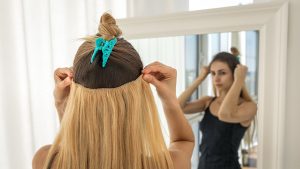
The primary problem with natural solutions such as lifestyle and dietary changes is that they can take months if not years to bear fruit. Moreover, the level to which the changes need to be made could be beyond many people’s capabilities.
After all, there is only so much free time and energy that the common individual has. Other commitments, such as family, work, and money, can always get in the way.
For example, how can you air-dry your hair or dry it in the sun, if you’re always in a hurry to get to work? Similarly, how can you always cook your own food with the right nutrients, if you barely get enough time to eat?
They may seem petty but are incredibly real and pertinent problems in today’s day and age. As a result, naturally fighting thinning hair may not be within everyone’s reach.
However, most people should be able to adopt a mix of natural and artificial treatments to deal with hair thinning. Which artificial treatments are we talking about? Consider the following.
Finasteride
Finasteride is the most effective, non-intrusive solution for hair loss. While hair transplants offer better success rates, they’re only suitable for people who have gone beyond the thinning hair stage and have proper bald patches.
Finasteride, on the other hand, can be used at any stage of pattern baldness. In fact, it is most beneficial in the earliest stages of pattern baldness, making it virtually perfect for people with thinning hair.
This oral drug works by preventing DHT accumulation in the scalp. It does so by inhibiting the enzyme responsible for converting testosterone into DHT. However, finasteride needs to constantly be in your system to be effective. This means that you’ll lose its benefits if you stop taking it.
We should also add that this is a prescription drug. You’ll need to get a prescription from a medical professional to get it. Finasteride is usually sold under the names Propecia or Proscar.
Minoxidil
Minoxidil is the most effective and popular Over-The-Counter (OTC) anti-hair loss treatment in the world. It was initially developed to treat ulcers in the 1950s. While not successful against ulcers, it was found to be very effective against hypertension. Subsequently, it was also found to be very useful against hair loss.
It worked against hypertension by widening blood vessels and opening up cellular potassium channels. The same actions also help this slow down hair loss and boost hair growth. Minoxidil ensures that hair follicle cells receive plenty of nutrition and prevents DHT accumulation in the scalp as well.
Like finasteride, though, you can only benefit from minoxidil product so long as you continue using it. As soon as you stop, its benefits will drop away. In fact, in some scenarios, the reversed state is much worse than it was before you started taking minoxidil.
For the longest time, Rogaine was the only manufacturer of minoxidil products because it had an exclusive patent on the drug. However, since that patent has expired, multiple other companies like Kirkland have come into the fray.
Even so, Rogaine remains the most reliable and trusted minoxidil brand. It is also the most innovative since it offers foam-based minoxidil products while other manufacturers only offer alcohol-based minoxidil products or topical minoxidil solutions.
If you want to use minoxidil, we strongly urge you to favor foam-based products. They’re easier to apply and don’t run down the face causing hair growth in unwanted locations. They also don’t irritate the scalp because they don’t contain alcohols.
Depending on your gender, we suggest trying the Men’s Rogaine 5% Minoxidil Foam for Hair Loss and Hair Regrowth or the Women’s Rogaine 5% Minoxidil Foam for Hair Thinning and Loss.
If the women’s Rogaine doesn’t work for you, you can always move to the stronger formula, i.e. the men’s Rogaine.
Low-Level Laser Therapy
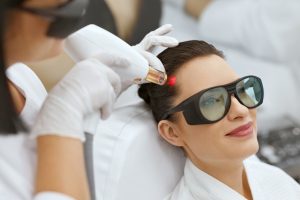
Low-Level Laser Therapy (LLLT) is based on the concept that light of a particular wavelength can stimulate hair follicles. This stimulation can be used both ways, i.e. reviving dormant follicles and improving the rate of hair production of active hair follicles.
It is scientifically accepted that LLLT works, as shown by a few clinical trials with very positive findings. This technique is, in fact, being used by various anti-hair loss clinics all over the world. However, professionally administered LLLT sessions tend to be very expensive.
More economical alternatives are available in the market in the form of laser caps. These laser caps contain medical-grade laser diodes that produce the required wavelength of light. The more laser diodes a cap contains, the stronger and more effective it will be in terms of how quickly it delivers results.
From this perspective, the best laser cap you can get in the market right now is the illumiflow 272 Diodes. As its name suggests, it contains 272 diodes, which is the maximum in the industry currently.
However, the more laser diodes a laser cap contains, the more expensive it is going to be as well. Even so, this is a good option because it happens to be one of the cheaper options in the premium price segment.
The iRestore Laser Hair Growth System may be much more economically feasible for people facing financial restrictions. It is positioned in the mid-level price segment but is considerably more affordable than competing options from the same market segment.
iRestore’s laser cap also offers the best balance between cost, effectiveness, and convenience. This laser cap has one of the best designs we’ve seen till now and is amazingly convenient to wear and use.
Hair Care Products
Dietary changes tend to take very long to show results. The reason why they take so long to reflect in hair is that the nutrients you consume via food are used to maintain your entire body.
Hair products such as shampoos, conditioners, and hair gels, on the other hand, are applied directly to the scalp and hair. This is why they can supplement what you eat wonderfully.
However, you need to be very careful about which hair care products you use. Sometimes, popular products can have artificial chemicals and compounds that can worsen the problem of hair thinning. You’ll need to be careful even if you’re using organic hair care products because they pose the risk of allergies and breakouts.
Shampoos
Thinning hair is a common enough problem. This means that you’ll find anti-thinning or anti-hair loss shampoos from virtually every brand out there. While you can always go ahead and try them out one by one, we do advise caution here.
Avoid trying any shampoo without going through its reviews or reading its ingredients list in detail. Between these two things, you should be able to tell which products are worth a try and which are not. Also, pay attention to the hair type these shampoos are most suited to as well the nature of your specific problem.
While we will always suggest that you evaluate potential shampoos independently, we recommend starting with these.
1. PURA D’OR Original Gold Label Anti-Thinning Shampoo
This should definitely be the first shampoo you try. As you can tell from its name, this shampoo was developed specifically for people with thinning hair.
It helps against hair thinning in three different ways. It nourishes the hair, it protects it from further damage, and it prevents DHT from interfering with the hair follicles. Additionally, this shampoo will also add volume, thickness, and shine to your hair.
All these benefits are a result of the ingredients in this completely organic shampoo. It contains nourishing ingredients like vitamin B3 and vitamin B7. To protect and moisturize hair, it contains argan oil and to block off DHT, it contains green tea, saw palmetto, rosemary, and black cumin seeds.
2. Laritelle Organic Diamond Strong Shampoo
Another shampoo definitely worth a try, if you’re not restricted financially is this one from Laritelle. While not meant specifically for thinning hair, it is still widely recognized for its ability to counter hair loss and re-grow hair. It is also one of the best organic shampoos you’ll find in the market.
This shampoo is gentle but still contains ingredients that are very effective at cleansing the scalp, moisturizing the hair, and preventing DHT from influencing hair follicles adversely.
The headline ingredients in this shampoo are jojoba oil, argan oil, cedarwood oil, rosemary oil, lemongrass, and ginger.
Argan oil performs the dual job of moisturizing and nourishing the hair and hair follicles. It is ably assisted by jojoba oil in these tasks, but this oil’s zinc content plays a more important role in this shampoo. Along with all the other ingredients, it is very effective at keeping DHT from miniaturizing hair follicles.
When you use this shampoo, you’ll not only benefit from its anti-hair thinning properties but will also enjoy a premium experience because this shampoo was designed with aromatherapy in mind.
3. Ultrax Labs Hair Surge
If you want to cut to the chase, you can consider the Ultrax Labs Hair Surge shampoo. This isn’t an organic shampoo, but it is easily the most powerful DHT blocking shampoo in the market right now. This means that it is ideal for people with severe hair thinning problem.
Its DHT-blocking properties are a result of its caffeine-based micro-formulation. The proprietary formulation is unique by itself, but the shampoo also contains other standalone DHT blockers such as saw palmetto.
At the same time, this shampoo could be a bit too strong for you if you’re only in the earlier stages of hair thinning. Also, if you don’t respond well to sulfates, you should avoid this shampoo.
Conditioners
Shampoos are applied and rinsed off fairly quickly. Conditioners, on the other hand, are almost always designed to penetrate deep into the scalp and the hair. This makes them ideal carriers for nutrients and substances that can rebalance the scalp.
However, like shampoos, conditioners also need to be chosen carefully because most contain artificial substances like silicones. While silicones help seal off the hair from adverse external influences, they also weigh down the hair.
When considering conditioners to help you deal with thinning hair, we suggest beginning with these.
1. Pure Biology Premium Hair Growth Conditioner
Pure Biology says that this conditioner is not only intended to help people grow hair but also repair damaged hair. This is why we feel that this conditioner is a good fit for people with thinning hair. After all, over-processing damages hair and can quickly lead to hair thinning too.
This conditioner from Pure Biology has a very impressive set of ingredients that combine to offer some really great benefits. For instance, argan oil, coconut oil, biotin, and vitamins B and E in this conditioner combine to nourish and moisturize hair.
Its keratin content helps repair damaged hair. Further, it contains rosemary oil that is an excellent DHT blocker. Apart from these, this conditioner also contains procapil which is clinically proven as a hair follicle stimulator.
2. Hairgenics Pronexa Hair Loss Therapy Conditioner
The Hair Loss Therapy Conditioner from Hairgenics Pronexa is as well-rounded a specimen as the one from Pure Biology. In fact, it even shares its primary flaw – cost. However, this conditioner carries with it the FDA’s approval, which is quite rare in conditioners.
Its formula comprises ingredients that are ideal for people with thinning hair. For instance, one of its main ingredients is biotin which can stimulate hair follicles and encourage hair growth. It also contains keratin that is good at repairing damaged hair shafts.
It even boasts of containing other protein sources in the form of marine collagen and seaweed extract. Further, this conditioner is very accomplished at blocking off DHT, owing to its saw palmetto content.
As a result of these ingredients and numerous others, this conditioner slows down hair loss, encourages hair growth, and even makes thinning hair look thick and voluminous.
3. ArtNaturals Argan Hair Growth Conditioner
The two conditioners we’ve mentioned above are very pricey. If you feel that their cost is more than what you’ll be willing to pay, you can consider this Argan Hair Growth Conditioner from Art Naturals. It is far more pocket-friendly and still offers great benefits.
As is evident from its name, it is based on argan oil with its amazing moisturizing and nourishing qualities. However, it contains many other highly beneficial ingredients too. The prime examples of these ingredients are biotin which nourishes the hair and keratin which repairs them.
Its formula also incorporates DHT blockers, which are critical for someone trying to deal with thinning hair. It contains three different DHT blockers in the form of caffeine, lavender, and green tea.
This conditioner is also hypoallergenic and completely organic, which will appeal to those of you who have very sensitive scalp and skin.
Hair Gels
While you rinse out shampoos and conditioners, hair gels stay in your hair for hours. This is why they’re perfect if you want to introduce ingredients designed to counter hair thinning into your scalp. Hair gels, of course, offer the added benefit of facilitating your stylistic goals.
The only problem is that manufacturers don’t usually formulate hair gels to help with genuine problems like hair thinning and hair loss. Most of them just focus on hold, shine, and slip.
This doesn’t mean that there are no anti-hair thinning options in the market. There are a few with the following two the best of the lot.
1. ORS HAIRestore Fertilizing Temple Balm
This hair gel or balm is perfect for people with thinning hair because it was developed to stimulate hair follicles into growing more hair. In fact, even the brand name ORS stands for Original Root Stimulator.
This hair gel is incredibly beneficial against thinning hair because it contains silica-rich ingredients in the form of horsetail extract and nettle leaf. Silica is a very important nutrient that makes hair stronger and resilient to damage.
Nettle leaf is especially beneficial because it improves circulation in the scalp. Improved circulation means the hair follicles receive more nutrition. It further means that excess DHT gets pushed out of the scalp. As a result, the follicles don’t become stunted.
2. Nourish Beaute Hair Regrowth Treatment
This hair gel from Nourish Beaute is based on a patented formulation called Redensyl. Redensyl was especially created to deal with hair thinning. It works in two ways.
The first is that it blocks DHT from interacting with the hair follicle, which prevents them from losing their ability to grow hair. The second is that it facilitates stem cell division in and around hair follicles.
Stem cell division is important because it not only keeps hair follicles strong but also helps in reviving dormant hair follicles. As excellent as redensyl is, it isn’t the only beneficial ingredient in this hair gel.
Other very beneficial ingredients in this gel’s formula include biotin, keratin, argan oil, jojoba oil, tea tree oil, coconut oil, castor oil, caviar, and silk amino acids.
This mix offers all kinds of benefits ranging from repairing hair shafts, nourishing hair and scalp, and even blocking off the production of DHT.
Contents
- Do You Have Thinning Hair or Fine Hair?
- Why Do You Have Thinning Hair?
- What Does It Mean to Have Thinning Hair?
- Fight Thinning Hair Naturally
- Counter Thinning Hair with Artificial Treatments
- Finasteride
- Minoxidil
- Low-Level Laser Therapy
- Hair Care Products
- Shampoos
- 1. PURA D’OR Original Gold Label Anti-Thinning Shampoo
- 2. Laritelle Organic Diamond Strong Shampoo
- 3. Ultrax Labs Hair Surge
- Conditioners
- 1. Pure Biology Premium Hair Growth Conditioner
- 2. Hairgenics Pronexa Hair Loss Therapy Conditioner
- 3. ArtNaturals Argan Hair Growth Conditioner
- Hair Gels
- 1. ORS HAIRestore Fertilizing Temple Balm
- 2. Nourish Beaute Hair Regrowth Treatment
